- Home
- >
- Preservation Archaeology Blog
- >
- Update from the Tribal Working Group
(June 27, 2025)—Ya’at’eeh (Hello)! Skylar Begay, Director of Tribal Collaboration here. Back in November 2023 we shared a blog called “Looking Back, Looking Forward: cyberSW and the Tribal Working Group” with reflections from the Tribal Working Group (TWG) and the cyberSW team after a year of collaboration since the TWG’s inception in 2022. I highly recommend reading that original post for the context it will provide for this update.
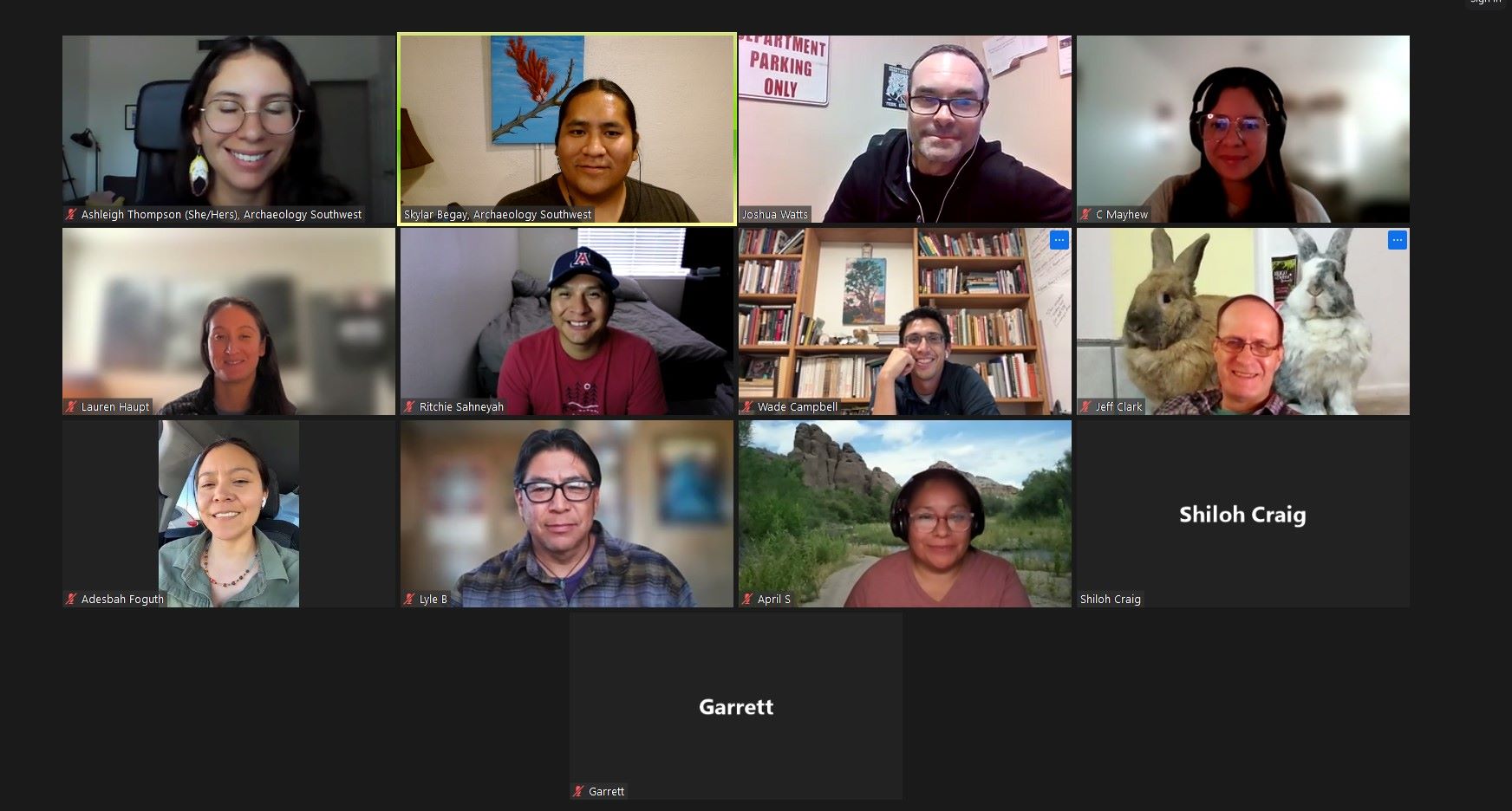
It’s hard to believe that it has already been three years since the formation of the TWG. At that time, I still had the title “Tribal Collaboration Fellow”; I have since moved into a staff position as “Director of Tribal Collaboration.” Over the years, the TWG and the cyberSW team has been one of the strongest examples of how Archaeology Southwest (ASW) is striving to uphold the values and commitments outlined in the Tribal Collaboration Model. The relationships built with members of the TWG have really taught me so much about the importance of consistency over time in maintaining strong values-based collaboration between peoples from different professional and personal backgrounds. It has also shown me that, over time, this relationship grows organically in directions one could not have anticipated at its start.
As we continue this journey of reciprocating time, energy, and knowledge, we begin to envision larger goals for the TWG that grow beyond cyberSW and into some of the other programs happening at ASW. We have had the staff who lead those programs provide presentations to our working group meetings in hopes of providing some ideas for where input from the TWG would be of best use. We have also had opportunities to meet members of the TWG in person, and we hope to gather sometime this year in nonvirtual space to strengthen our bonds even more.
Caitlynn Mayhew (Diné), cyberSW Native American Fellow, has taken the lead in coordinating our TWG meetings and has done a masterful job of doing so. So, I have to give her my thanks for putting in the work of getting up to 20 people who all have full-time jobs in one place at the same time month after month for nearly two years! It’s much harder than many people realize, and much appreciated Caitlynn. Ahéhee’ (Thank you!)
Below are reflections from some of the cyberSW team and the Tribal Working Group, whom I also thank for showing up, for your passion in your own work, and for all the energy and knowledge you have given to braid our collective knowledge over the past three years. I am excited for what is still to come from this collaboration and relationship.
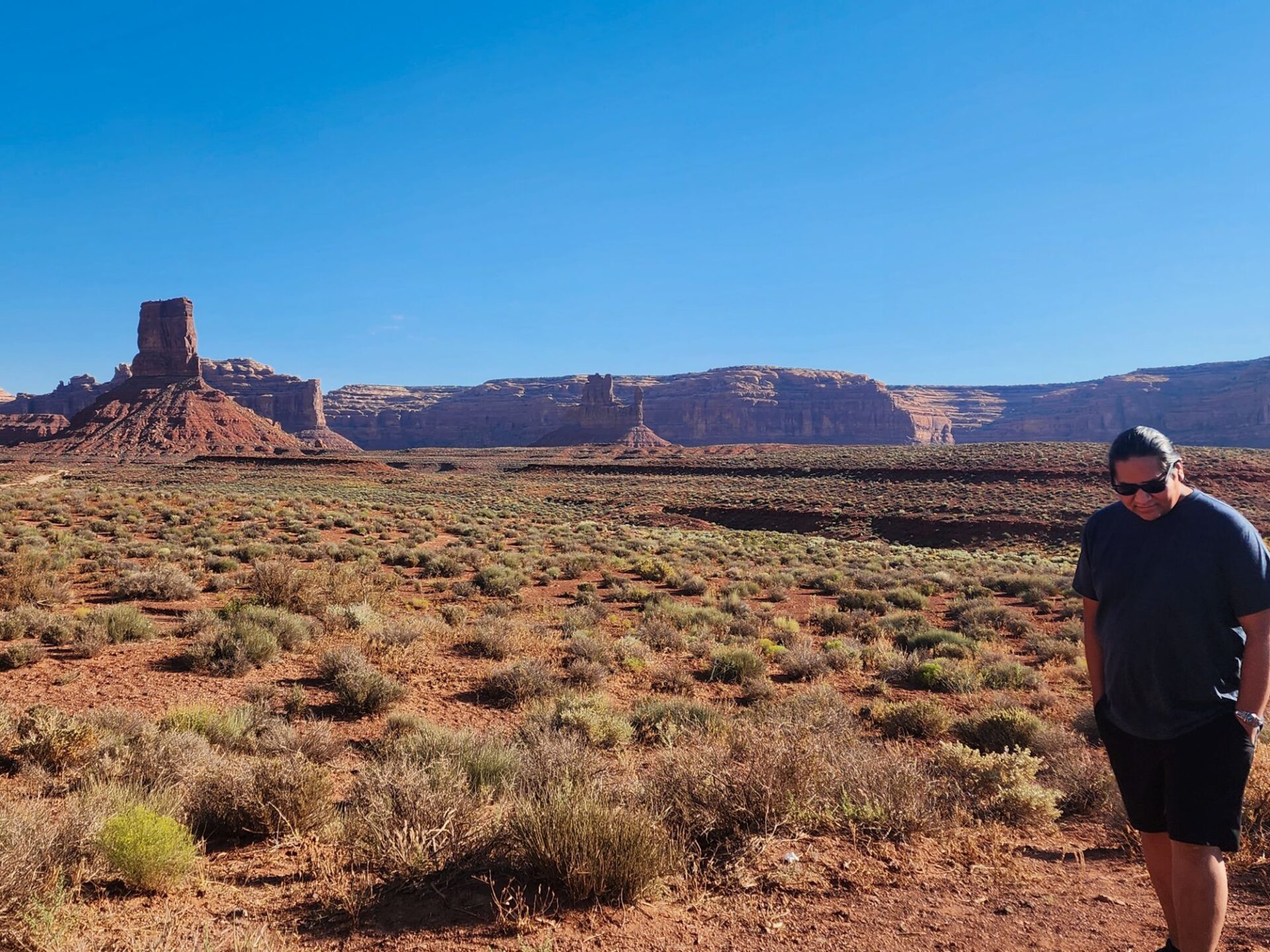
Jeff Clark—Vice President of Research, Archaeology Southwest
Collaboration with the TWG has made me reflect on my career as an archaeologist and how some of the projects I was involved with in the past that were then considered ethical may be judged differently by future generations. This makes me want to collaborate even more with Indigenous groups going forward, even though it can be a very time-consuming process. I want to understand what is important to various Tribes, recognizing each has different priorities and that there is even considerable disagreement within Tribes. I also want to conduct research as ethically as possible within a collaborative framework. I still believe many Tribal cultural resource officers and Indigenous Knowledge Holders value independent archaeological research because it does not serve specific Tribal agendas that may be at odds with those of other Tribes. During my career, archaeological interpretations have been critiqued by Tribes, but never dismissed.
The following are some updates since our first blog in 2023:
» Exclusion of mortuary-related data, even that previously published
» Addition of new layers to cyberSW site exploration, including current and ancestral Indigenous land boundaries. The latter was obtained from Native-Land.ca
» Refocusing the emphasis of cyberSW away from painted ceramics (archaeologists’ obsession!) to plant and animal use, which many Indigenous groups are very interested in with respect to cultural revitalization and food sovereignty
Based on this refocusing, Native American Fellow Caitlynn Mayhew was hired to develop a digital Indigenous field guide of plant and animal species important to the O’Odham as an educational and revitalization tool. This led to the submission of the first National Endowment for the Humanities (NEH) grant for cyberSW (previous support was through NSF, the National Science Foundation). We were awarded a $350,000 grant through NEH’s Digital Humanities Advancement Grant program. Unfortunately, as of this writing, the grant was abruptly and unethically terminated by the Department of Government Efficiency as part of their dismantling of NEH in early April 2025.
I am amazed how productive collaborations have been, with our shared emphasis on providing constructive solutions on how to move forward rather than dwelling on past wrongs, shutting down dialogue, or taking impracticable positions. The collective intelligence and wisdom of the group is also truly impressive. The meetings have been extremely productive and educational for me.
The TWG has done a lot of good work and provides a model for long-term collaboration. I don’t think there are many other comparable examples out there. It is time to get some of this work out to a larger audience, including archaeologists, organizations engaged in collaboration, and Indigenous communities and cultural resource officers.
Ritchie Sahneyah—Hopi Tribe
My name is Ritchie Sahneyah and I am Tobacco Clan from the village of Tewa on Hopi Land. I was recently hired as an Archeological Technician at Grand Canyon National Park. This is my first season as a National Park Service seasonal employee, though I served in a similar capacity last season as an intern.
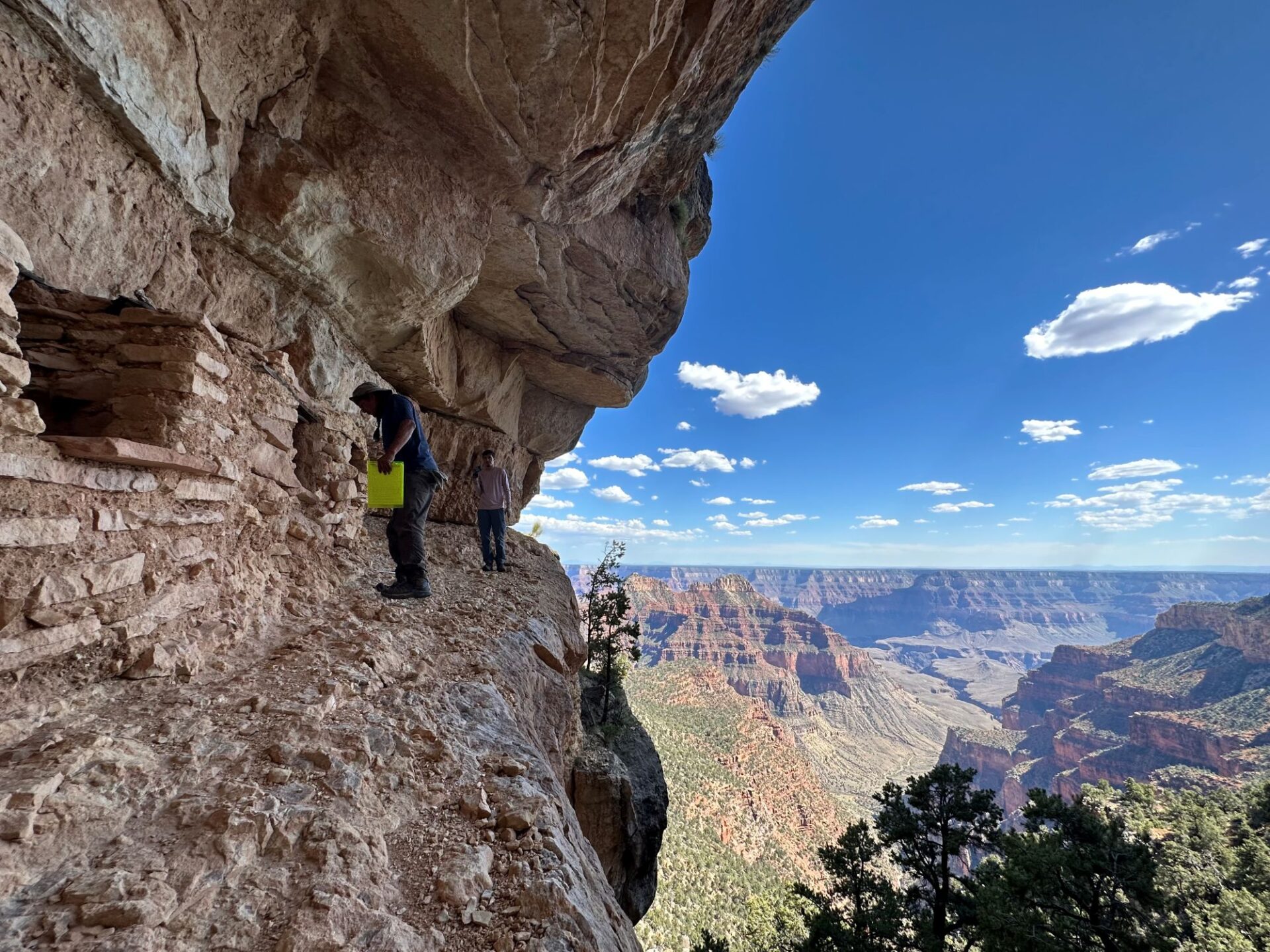
I have been part of the TWG for approximately a year and a half. My experience has been surreal—I received my bachelor’s degree a year ago, and just to be involved in this group has been an honor. It is empowering to hear and see others from a similar background thrive in academic and professional spaces. I learn so much from just listening to the conversations, projects, and ideas this group comes up with.
I am always looking forward to what others with an abundance of experience and expertise have to say about the monthly topics or projects. I feel that collectively there is so much more we can accomplish and provide to the anthropology/archaeology community. I am in the beginning stages of my academic and professional journey, and I have come to learn that we all have similar passions and experiences that push us to better our communities.
As an organization that supports cyberSW, Archaeology Southwest has set a standard of collaboration and support of Indigenous projects and research. I feel there is so much untapped potential, but I feel it is our responsibility to set a foundational pathway for others to ethically follow.
I am very thankful for the donors who make the TWG possible and the dedicated individuals who organize and support this important undertaking.
I envision my personal contribution to be simply in support of the larger goal of this group to provide an Indigenous perspective to new ideals, technology, and advancements that impact Tribal interests. Also, the development of foundational values and principles that guide the future of Indigenous Anthropology/Archaeology.
Lyle Balenquah—Hopi Tribe
Hello, my name is Lyle Balenquah. I am Hopi, and a member of the Third Mesa Greasewood Clan from the Village of Paaqavi. I have earned both my bachelor’s and master’s degrees in Cultural Anthropology from Northern Arizona University. For more than 20 years, I have worked as an archaeologist across the Four Corners region, documenting, assessing and preserving ancestral Hopi sites. I also work as an Outdoor Guide rowing boats on the San Juan River and leading land-based excursions into Ancestral Hopi lands.
I think I have been a part of the group for maybe 3 or 4 years. So far, it has been an interesting endeavor, learning and sharing about the various Indigenous perspectives related to archaeology and cultural preservation. It’s been great to see the number of Indigenous archaeologists increase within our group!
I stick around in the hopes that we can continue to develop new ways to incorporate archaeology and related fields within our Indigenous communities and ways of knowing. I see that there is real potential for this group to serve an advocacy role not only for our individual Tribes, but also for Indigenous communities on a wider level.
One improvement is that we recognized the need to move the discussion beyond the cyberSW Database, which was the original focus. Now we are reorganizing the group’s focus into more of a “cultural preservation” emphasis—what is important for our communities to know and learn? I hope that we continue with this direction and pursue community-oriented goals.
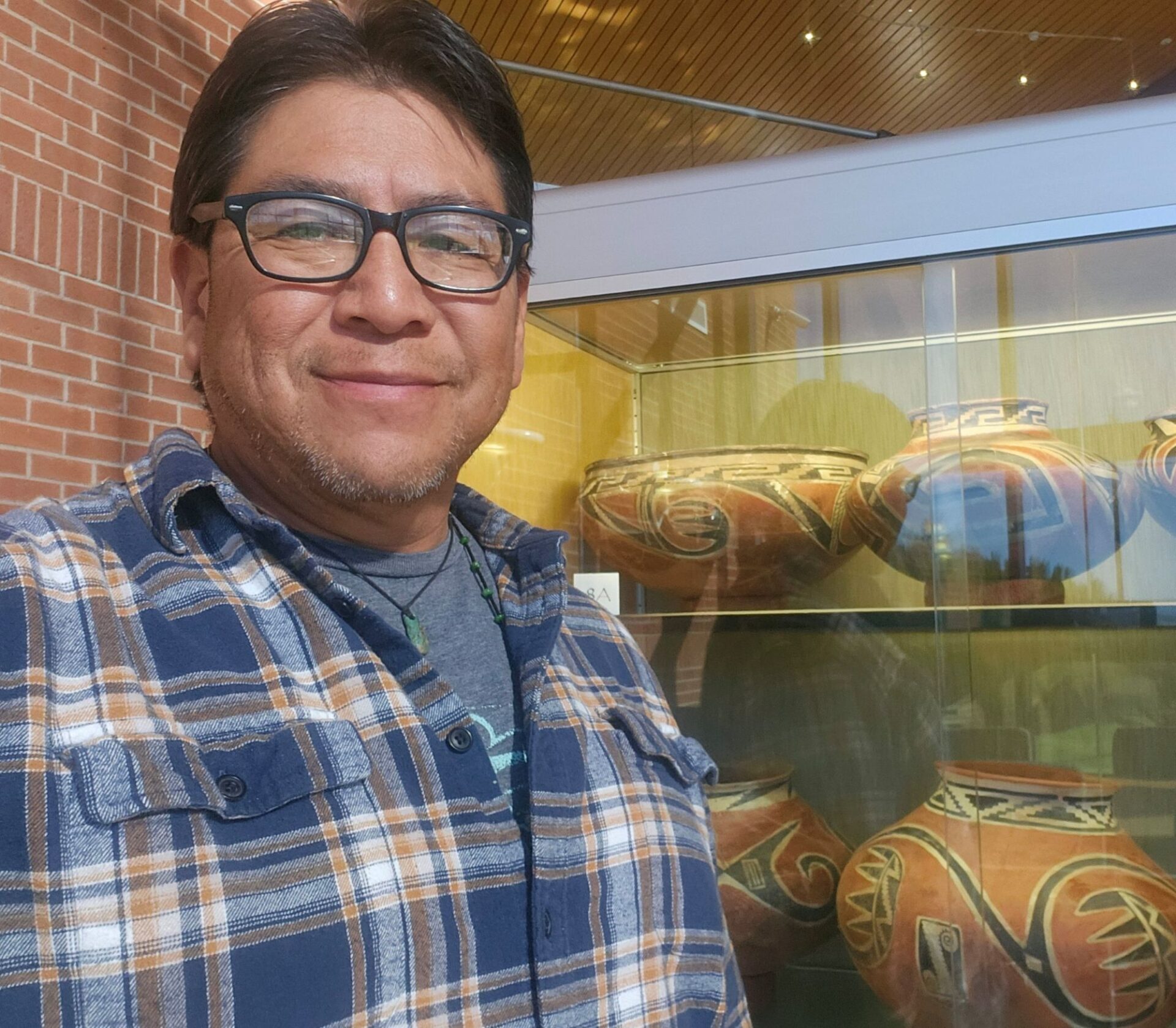
Overall, it has been a pretty cool experience to hear from other Indigenous professionals involved in archaeology and related fields. We don’t always agree, but this group highlights the diversity that is present, and needed, within larger archaeology-ish discussions.
For myself, I hope I can serve as a motivator for Indigenous CRM professionals to speak up and speak out about not only the injustice of archaeology, both past and current, but also as advocates for greater inclusion of our own community members in the work we do.
For the group, I hope we can continue to come together to vocalize our experiences within archaeology and related fields, and that our voices contribute to the development of Indigenous Archaeology, whatever that may mean to our respective communities.
Garret Briggs—Southern Ute Indian Tribe
Maykh—Nu nay neé ya Garrett W. Briggs. Nu Pinu Nuchi. Nu kapuuta, moghwachi, murukachi. Hello, my name is Garrett W. Briggs. I am a citizen of the Southern Ute Indian Tribe, descendant of the kapuuta and moghwachi bands, and of Scottish and Irish ancestry.
I pursued an undergraduate and graduate degree in archaeology with the goal of learning how non-native scholars studied and classified Indigenous people. I did this with the intent of returning to the Southern Ute Indian Tribe to learn about my community and culture, as well as assist in culture preservation. Upon graduating from Northern Arizona University in 2017, I was hired as a NAGPRA Coordinator Apprentice for the Southern Ute Indian Tribe and was later appointed as their first Tribal Historic Preservation Officer.
I have been a part of the cyberSW TWG since August 2022. Over the last 34 months, I have been inspired by my fellow advisors and the willingness of cyberSW to consider suggestions and implement recommendations made by TWG. With the support of cyberSW, the integration of culturally important data identified by TWG advisors and the development of a Field Guide, resulting from a collaboration between Caitlynn Mayhew and the Gila River Indian Community, has been possible.
cyberSW’s collaboration with Native American professionals has resulted in positive changes based on holistic discussions, rooted in Indigenous knowledge and academic perspectives. In the future, I will continue advocating for the incorporation of archaeological data not previously included—such as those resulting from nonsedentary or seasonally sedentary Tribes, like the Ute and Apache. By working with Nations to identify culturally appropriate information, a more encompassing database and a better representation of Indigenous diversity throughout time will be made available.
My experience as a TWG advisor has been insightful and educational. I am thankful for the opportunity to participate in the collaboration between cyberSW and TWG. Tuvuchi toghoyaqh to cyberSW for securing grants and to the donors who continue to make this possible.
Caitlynn Mayhew—Diné, cyberSW Native American Fellow
I would first like to start with sharing my appreciation for the incredible foundation laid by Ashleigh Thompson (Red Lake Ojibwe), our former Director of Tribal Collaboration in Research and Education. Hopefully, we had a smooth transition into this current chapter of the TWG with me behind the scenes.
Apart from the administrative support, my involvement with the TWG has been focused on the Digital Indigenous Field Guide project. I respect the presence of an Indigenous advisory group to hold space for projects and progress within our program. Our TWG group is diverse but centered on a common goal: community. Diversity, as targeted as that word is these days, is essential to meaningful discourse and progress. It has been invaluable to have a space to break from a Western paradigm and return to a holistic model of operation.
Although we as a TWG have a goal of producing a larger project, we also recognized a need to take the time to slow down and fall back into a place of reflection. We must remember the message and mission of our group before we grow. So, from my perspective, our TWG is an essential advisory group, not just for cyberSW, but for all of ASW and hopefully beyond. An Indigenous advisory group is incredibly important for non-Indigenous companies whose industry is based on Indigenous culture and history, especially for industries that regularly work with Indigenous nations and communities. In a perfect world, this would be non-negotiable.
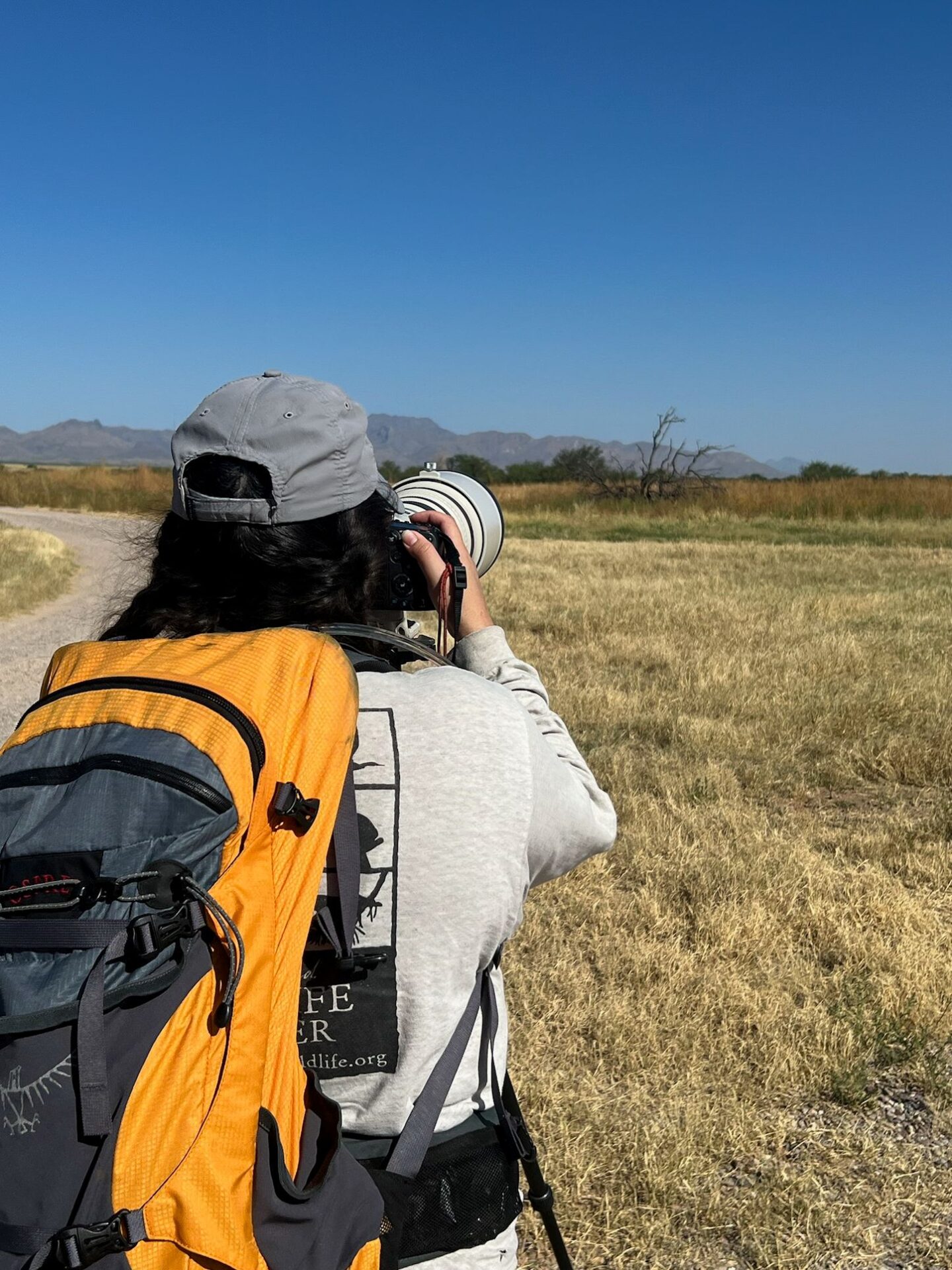
There is a distinct difference between a Western and an Indigenous approach to project management. From my experience, the Western model reflects a practice of speed and efficiency. This often sets blinders to the larger picture and the importance of the work being done. The Indigenous approach calls for moments of reflection and time dedicated to hearing the voices of the collective. This process might mean your project could get caught in the gauntlet of Indigenous bureaucracy for some time. However, it also means that your advisory group has encouraged you to use the time to make meaningful decisions and relationships with the community you’re working with.
My appreciation for the TWG is the determination to maintain the Indigenous voice and culture amidst the pressure to conform to Western business practices. Are we perfect? No, nothing is perfect. And even that notion is inherently Indigenous.
Ahéhee’ to all members of our TWG for showing up each month and sharing your voice.
Wade Campbell—Diné
Ya’at’ééh—my name is Wade Campbell. I’m a Diné historical archaeologist currently working as an assistant professor of anthropology and archaeology at Boston University. As one of the original TWG trio that began in March 2022, I have observed the program’s evolution over the past three years with great interest.
One of my principal reasons for getting involved was related to the cyberSW database itself—while a grad student, I explored cyberSW 1.0 and realized that it did not include any archaeological sites associated with more mobile communities (for example, early Navajo, Apache, or Ute)! I’ve since come to learn that this is partially due to the ossification of the various logical frameworks that structured cyberSW’s predecessor databases, which focused on large village-type sites throughout the Southwest. It turns out, however, that while good published data exists for early Navajo sites (for example, the Fruitland Project reports from the Dinétah region of northwest New Mexico), the process of actually adding this data into cyberSW has been slow due to bureaucratic and legal hurdles.
As a result, in purely archaeological terms, cyberSW remains a powerful yet limited tool for many contemporary researchers and Native communities alike. This, of course, has raised a larger set of questions —who is cyberSW for, and how can it be made a more effective tool for Native parties in particular? The ensuing discussion over the past three years as more Tribal voices and experiences have been added to the working group has helped drive the cyberSW 2.0 project in new directions.
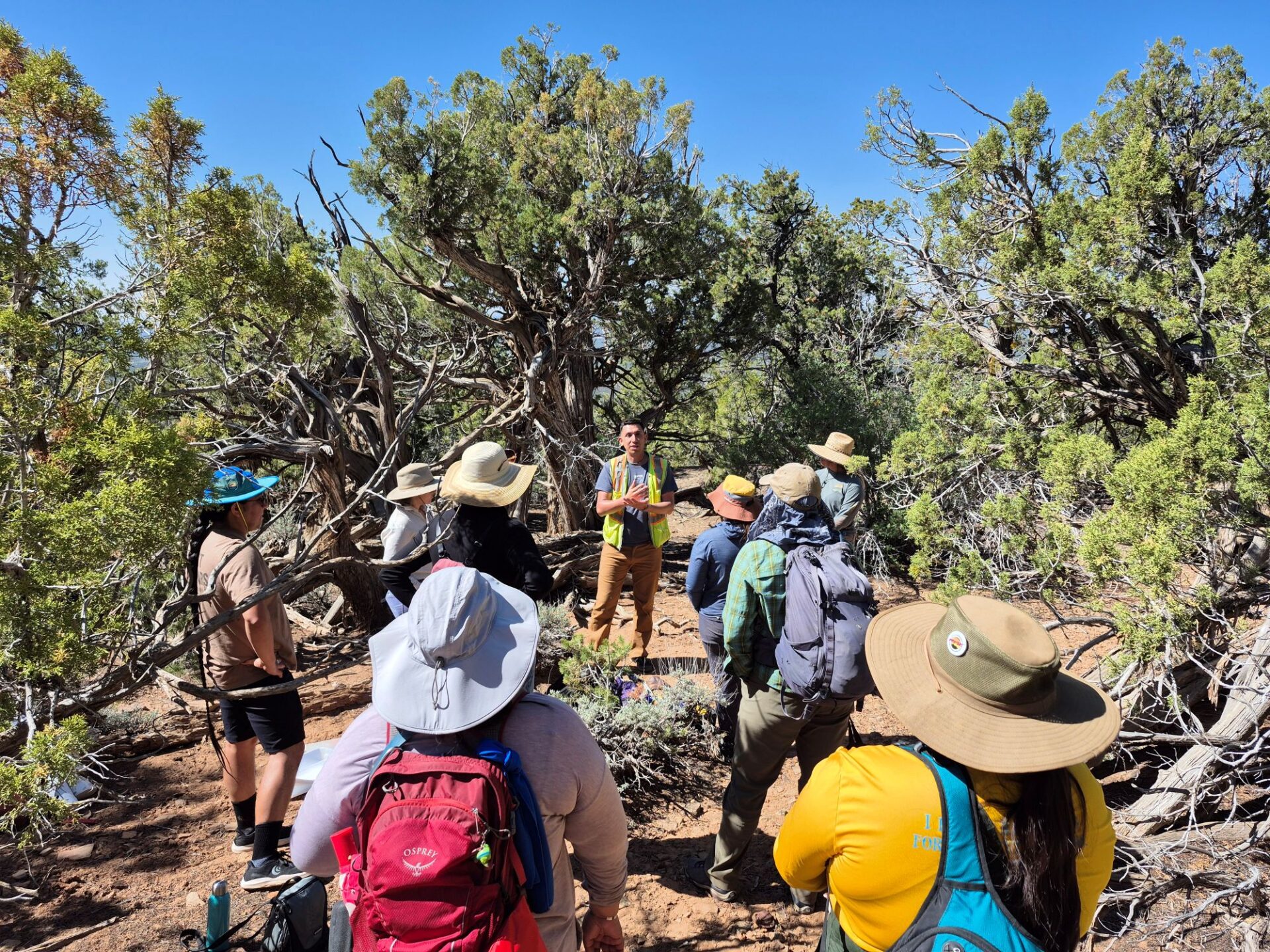
Most notably, the conversations we’ve had about ASW’s commitment to Native outreach and collaboration (see the 2023 position paper Sky linked at the top of this post), the challenges in developing the “pipeline” of Native professionals and scholars, and what “counts” as archaeological data helped a ceramics-focused archaeological database discussion to grow into a really fascinating mixed ecology/cultural heritage project—the bird-focused O’Odham Field Guide!
This successful back-and-forth with the ASW staff and their general willingness to discuss all areas of interest have been instructive in other ways. Notably, I have been approached by other groups/projects interested in forming their own research-oriented “Tribal working groups” or “advisory panels.” The most common lessons—patience and a willingness to experiment—seem obvious, but I think that we have reached a point where some critical reflection will allow our larger group to identify other elements integral to a positive TWG experience in other regions/projects.
At the same time, I feel that it’s important to not lose sight of the underlying archaeological database work that brought the TWG together. cyberSW 1.0 had a structure that meant that not all Native communities were represented in a “regional” database; working to modify this underlying framework and incorporate additional sites will help to expand the temporal and spatial scope of the cyberSW 2.0 database. It’s my hope that increased representation will hopefully spark new discussions, be they archaeological, ecological, or otherwise!
The Tribal Working Group includes:
April Sewequaptewa, Archaeologist, Hopi Tribe
Garrett Briggs, Archaeologist, Southern Ute Indian Tribe
Lyle Balenquah, Cultural Specialist and Archaeologist, Hopi Tribe
Raquel Romero, Cultural Resource Division, Gila River Indian Community
Shane Anton, Tribal Historic Preservation Officer, Salt River Pima-Maricopa Indian Community
Wade Campbell, Assistant Professor, Boston University, Diné
Adesbah Foguth, Diné
Lauren Haupt, Graduate Student, University of New Mexico, Caddo Nation
Ritchie Sahneyah, Archaeological Technician, Hopi and Tewa
Shiloh Craig, White Mountain Apache
The cyberSW team includes:
Andre Takagi, Senior Systems Analyst/Developer
Caitlyn Mayhew, cyberSW Native American Fellow, Diné
Jeffrey Clark, Preservation Archaeologist
Joshua Watts, cyberSW Manager
Sarah Oas, cyberSW Data Specialist
Skylar Begay, Director of Tribal Collaboration, Diné, Mandan and Hidatsa
Members of the TWG are preparing an article on the group’s experiences thus far, what has worked, what hasn’t, and what we are planning going forward. We plan to submit the article to an open-access journal. Stay tuned!